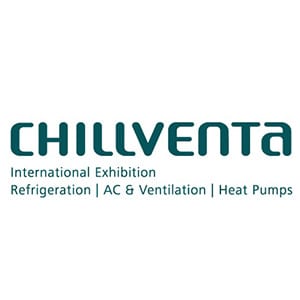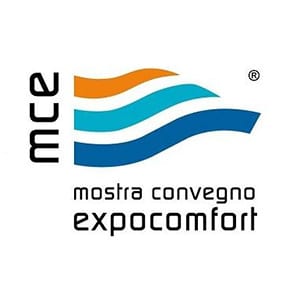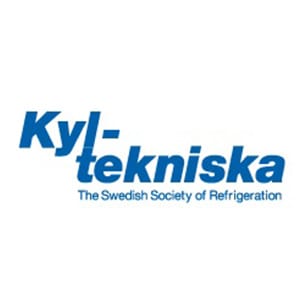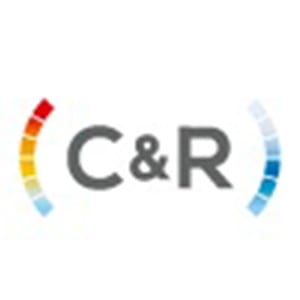How and where can I use CRANE Temper?
A: CRANE Temper can be used in for instance food industry wherever you need a heat transfer fluid, especially at low temperatures, even at temperatures as low as -55/-60°C.
How do I use CRANE Temper?
CRANE Temper is a heat transfer fluid to be used in closed systems for secondary cooling. Keep the product in closed original container until use. After filling the system, make sure to air purge the system well and preferably at ambient temperature. Label the piping and the filling point indicating that CRANE Temper is to be used. Make sure to have product available at the filling point to be able to top up the system if necessary.
What do I gain by using CRANE Temper instead of traditional glycol?
CRANE Temper has a lot of important advantages compared with traditional heat transfer fluids:
- Non-toxic – Suitable for food applications
- Low viscosity – Reduced pump energy costs
- Readily biodegradable – Not harmful to the environment
- High heat transfer capacity – High energy efficiency in your installation.
- Low Freezing Point – Advantageous to use in low temperature applications
- Chemically Stable – No degradation of the product
- Reduced installation cost – Due to smaller components
- Acceptable viscosity also at very low (-55/-60°C) temperatures
Acceptable viscosity also at very low (-55/-60°C) temperatures
Is CRANE Temper safe to handle?
Yes, CRANE Temper has a pH value of 8-9 and does not require any special handling or storage measures. You only need safety glasses and protective gloves as always when working with chemicals.
What if I mix CRANE Temper with other heat transfer fluids?
CRANE Temper must not be mixed with other heat transfer fluids. The product has an optimised composition that allows very good thermodynamic properties and includes a highly efficient corrosion protection package in optimal concentration. Mixing 2 different heat transfer fluids will most likely offset this balance and lead to poor performance and possibly even system failure.
What is the lowest freeze protection temperature CRANE Temper can achieve?
CRANE Temper is always supplied ready-to-use and is available in seven different versions with freezing points from -10°C to -60°C. We recommend calculating the appropriate safety margin between operating temperature and freezing point for each individual application, as a rule of thumb a safety margin of 5°C can be used.
Why is CRANE Temper delivered ready to use instead of concentrate?
To ensure high quality and optimal concentration of corrosion protection. If diluted, the freezing point will change together with a lower concentration of corrosion protection, which reduces the corrosion protection performance.
Does CRANE Temper have any food approvals?
Yes, CRANE Temper is listed in the NSF non-food program, white book, HT2, Registration no. 136737.
What is pH value and what is the appropriate pH value for CRANE Temper?
pH describes how acidic the fluid is. pH 7 is usually considered neutral. Generally speaking, a lower pH value means that the fluid is more aggressive towards metals. CRANE Temper is delivered with the pH value of 8-9. During operation the pH for CRANE Temper should be kept at 8-9. For deviations, consult your local distributor or KRAHN Specialty Fluids AB that can supply you with a Fluid test kit that enables you to check pH and density on site or assist you with an analysis of the fluid.
What can cause a pH change?
The pH may change if the fluid is diluted with e.g., water, glycol, or any other heat transfer fluid. Ongoing corrosion, often caused by poorly air purged systems, may increase the pH as metal oxides are alkaline. In severe corrosion, this can raise the pH of the liquid, perhaps up to 10 and in exceptional cases even above 10 after a long time. At high pH values, it should be investigated why a pH increase occurs and how to reduce the pH. Consult your local distributor or KRAHN Specialty Fluids AB in such cases. The pH is best reduced by replacing part of the volume with new CRANE Temper of the correct pH value.
What shall I do if a have a spillage of CRANE Temper?
Rinse with water and wipe the surface dry at once. If needed use a soft brush before rinsing with water.
What shall I do if a have a leakage of CRANE Temper?
Rinse with water and wipe the surface dry at once. If needed use a soft brush before rinsing with water.
Ensure that the system is built according to CRANE Temper system guide and that the right type of materials are used. Make sure to find the reason for the leakage and correct it.
When the leakage is corrected make sure to top up the system and air-purge the system air.
How do I store CRANE Temper?
Store in closed original packaging protected from weather and wind.
Do I have to change the CRANE Temper after a certain time?
No, CRANE Temper is chemically stable and does not degrade, like glycol-based products. By continuously analyzing the fluid once a year and maintaining the system properly, the lifetime of a system with CRANE Temper is virtually unlimited.
Where can I get more information about CRANE Temper or where can I buy CRANE Temper?
Why choose CRANE Temper in favor of other heat transfer fluids?
Choosing CRANE Temper gives a series of advantages in respect of economy, health, and environment.
- Low energy consumption – Very low viscosity means decreased energy consumption in pumps and the overall system.
- High thermal conductivity allows for better heat transfer, which can enable smaller heat transfer surfaces in the cooling coil and evaporator.
- The high specific heat can also enable a higher temperature in the evaporator and thus a better COP for the chiller.
- Sustainability – Chemically stable product for a long-life system.
What are the benefits of secondary cooling systems?
Secondary cooling systems have the following essential benefits:
- Refrigerant can be kept in the machinery room
- Environmentally sound system.
- Easy installation and minimal maintenance.
- Higher quality of the cooled products.
- Possibilities of heat recovery.
- A better overall economy.
- Future flexibility (possible expansion of system)
A large benefit of using secondary cooling systems is that refrigerant can be limited to the engine room and the refrigerant charge can be greatly reduced. Installation, controlling and maintenance of secondary systems is often easier and cheaper. Also, there is a large flexibility in secondary cooling systems when it comes to changing or expanding the system, compared to direct refrigeration systems.
A small leakage of a heat transfer fluid in a secondary cooling system involves a lower risk and reduced risk of downtime, than in a refrigerant system. The cost of replacing a smaller charge of refrigerant, in case of a leakage, will be substantially lower than for a direct system with refrigerant throughout the facility.
Refrigerants routinely cost more per kg than a heat transfer fluid, so using a heat transfer fluid can result in a lower initial cost of the system.
For secondary cooling systems there are easy ways of utilizing heat recovery. Also, secondary systems are normally not regulated by the PED directive.
Can I affect the installation costs by using CRANE Temper?
CRANE Temper has excellent heat capacity and heat transfer properties, which means reduced liquid flows and consequently reduced pipe and component dimensions. The installation cost will in other words be lower compared to a system designed for a glycol-based product.
Is it possible to use CRANE Temper in an existing system (retrofit)?
CRANE Temper can replace existing heat transfer fluid if certain measures are considered. Dimensions of pipes and heat exchangers is normally OK since CRANE Temper has better heat transfer properties than for instance glycols. However carefully cleaning is necessary when converting to CRANE Temper. Also check compatibility of the used components in the system. Consult your supplier or KRAHN Specialty Fluids AB.
Why should regular analyses of the fluid be done?
Continuous inspection and maintenance of the plant means that the service life is increased as any faults and leaks are detected early. Through fluid analysis, you can see the state of the fluid, a parameter you cannot see during operation, unlike e.g. leaking valves. If the properties of the fluid deviate, it can often be adjusted.
If the system is not properly maintained, it can be costly in the form of high energy consumption or other operational problems. By performing regular analysis this can be recognized and dealt with at an early stage.
What can I check myself on site?
You can easily check smell and appearance . KRAHN Specialty Fluids AB can supply you with a Fluid Test Kit which includes equipment to check pH and freezing point (density) on site. Also, pH sticks and density meters are available separately for sale to measure pH or density.
Why should I save a reference sample and keep it in a dark place?
A reference sample is kept to be able to compare the operating fluid with unused fluid in the sense of smell and appearance . Store the liquid in a dark place. Liquid may darken if exposed to direct sunlight.
Which materials can be used?
Most of the commonly used materials and components. When selecting materials, one must take the operational temperatures in the system into account. The higher the temperature, the better quality of the materials are recommended . Contact KRAHN Specialty Fluids for information and recommendation regarding installation.
Latest News
Trade Affiliations









